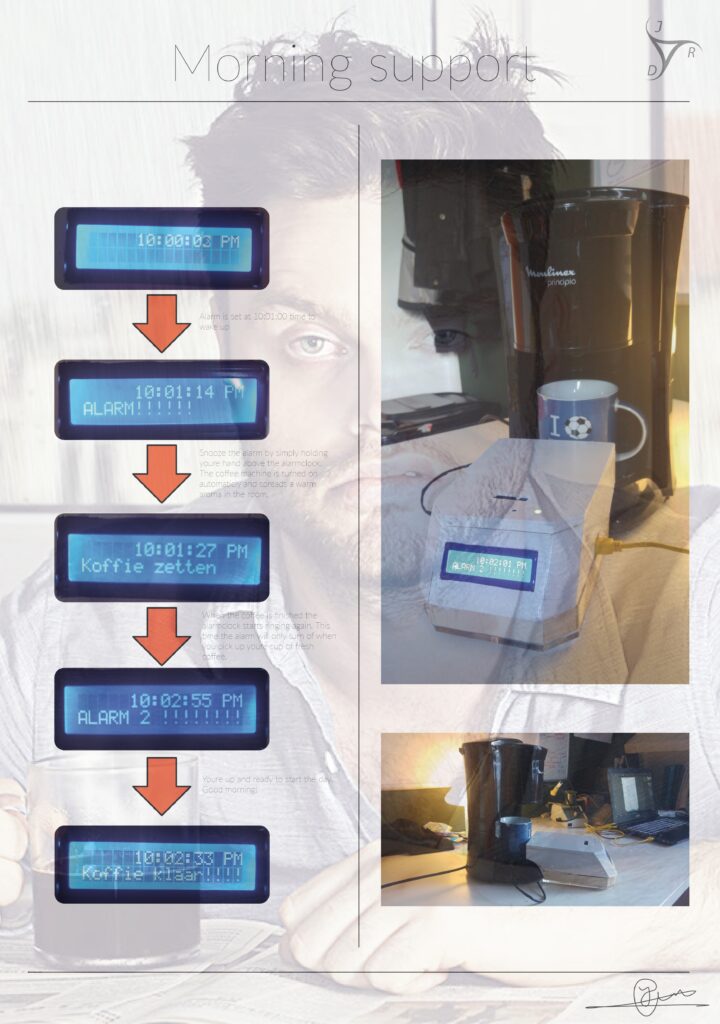Alarm Clock Coffee Maker
For the Interactive Products course, I embarked on my first experience with Arduino through a project that involved designing a unique coffeemaker alarm clock. The concept was inspired by a mood board that I created, focusing on the theme of morning rituals. The result was a functional device that not only woke me up but also prepared coffee in sync with my morning routine.
The device featured an internal clock that triggered the alarm at a set time. The user could snooze the alarm by hovering a hand over the device, which activated an infrared sensor. This snooze function also triggered a servo motor that pressed the button on a Senseo coffeemaker. After a five-minute snooze, the alarm would ring again. This time, however, the alarm could only be turned off by picking up the coffee cup from a pressure sensor platform. Only when the coffee was ready, and the cup was removed, would the alarm stop. The servo motor was programmed to press the coffeemaker’s button only when the pressure sensor detected the cup.
The design included a sleek wooden casing with a futuristic perspex bottom plate. A sunken LED in the base created a soft, glowing effect that illuminated the edges, acting as a wake-up light. This visual element enhanced the communication between the device and the user, ensuring the interaction felt seamless and intuitive. The interface I built between the alarm clock and the coffeemaker was achieved through a custom-made negative mold of the coffeemaker’s front, using acrylic to craft the necessary components.
The overall system included a variety of sensors and actuators, such as infrared for snoozing and a pressure sensor for detecting the coffee cup, coupled with a servo to physically activate the coffeemaker an LED functioning as wake-up light and an LED-screen for instructions. This project not only improved my technical skills but also enhanced my understanding of interactive design, blending technology and user experience to create a practical, innovative solution.

